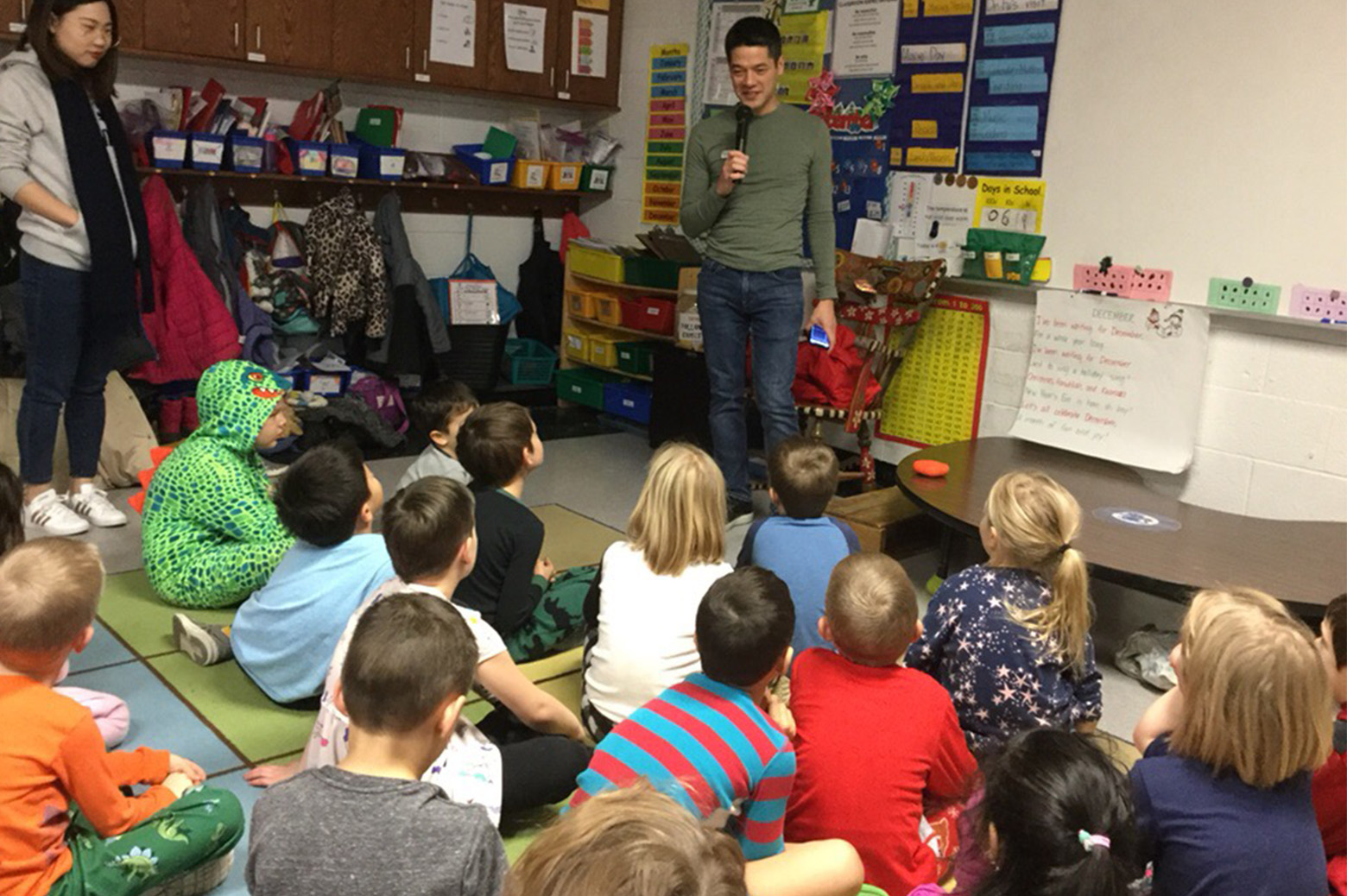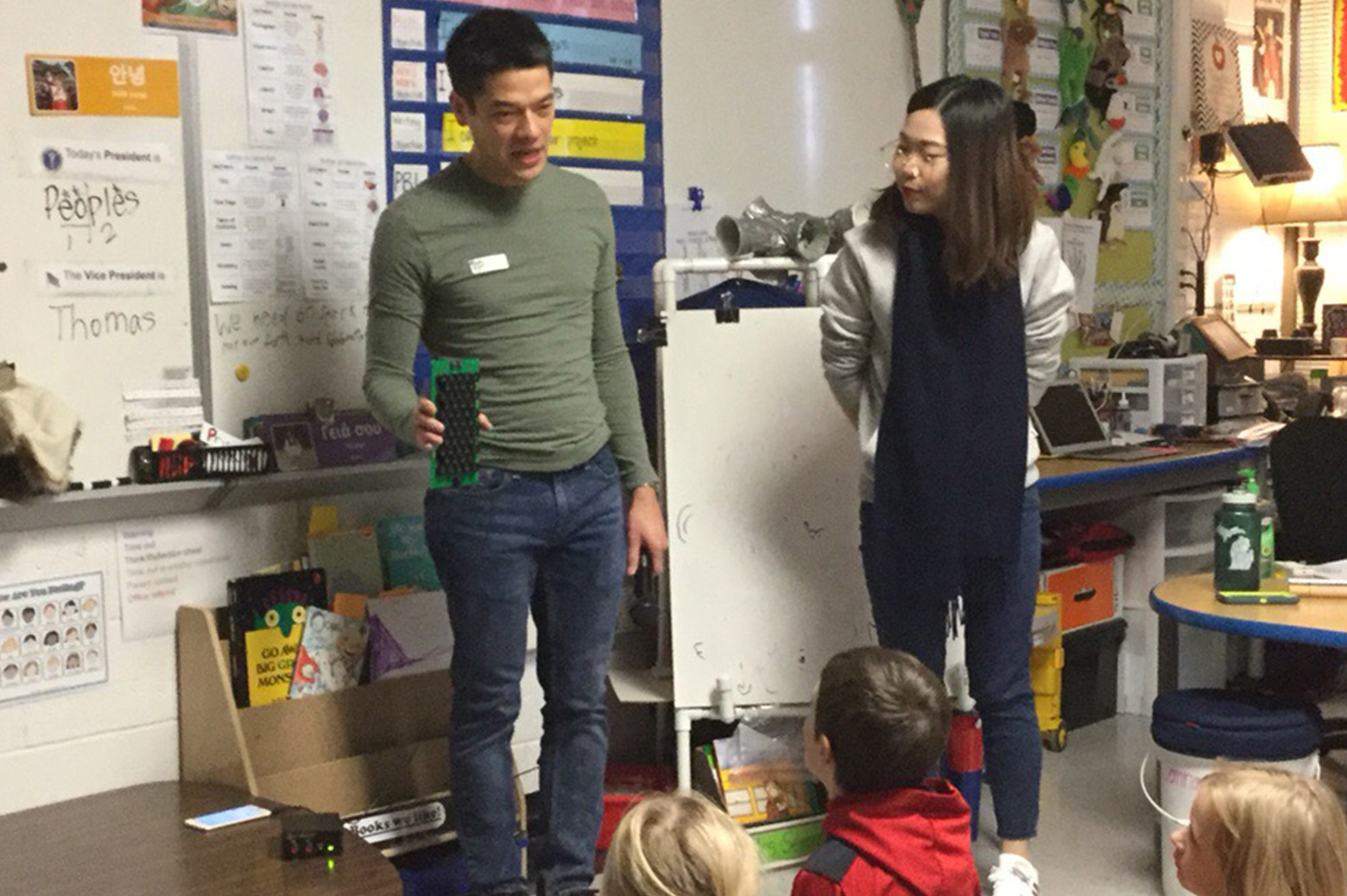Teaching science with sound waves
The classes got to learn about cybersecurity, the physics of sound waves, and how to beam music a long distance like a flashlight using ultrasound.

 Enlarge
Enlarge
Prof. Kevin Fu and visiting PhD student Xinyan Zhou volunteered to teach the first grade classes at Ann Arbor STEAM about the science of sound. The classes got to learn about cybersecurity, the physics of sound waves, and how to beam music a long distance like a flashlight using ultrasound.
Fu’s lesson was part of a project for the students to invent a device that their teachers could use to more effectively call them back inside from recess on the playground.
“The kids claimed that they couldn’t hear the teacher to come back in from recess,” says Fu. “So the full class got together to build a special device for the teacher to effectively call them back in.”
In the end, the students may need to just listen more carefully – but they still got the chance to try it out with ultrasound, useful for being very directional and able to travel long distances.
In the lab, Fu and his students put ultrasound to work to crack security measures in sensors and computing components. The group uses ultrasound to inject incorrect information into sensors – while the frequencies are inaudible, they can still produce audible byproducts on devices. Ultimately, this can affect how the sensor records data about the world around it.

 Enlarge
Enlarge
While this was Fu’s first exercise in an elementary school setting, his outreach work has made a big impact in the past. As the founder of the Explore Graduate Studies event, Fu was able to secure NSF funding to send faculty to a variety of underserved or underrepresented schools to teach undergraduates how to write more effective graduate school applications. The lessons included writing critiques and workshops, and has evolved over the course of six years into a recurring event on the U-M campus.
Recent sessions have given participants from around the country perspectives on opportunities that exist for those who pursue graduate work in computing. They include Q&A panels with current graduate students, lunch with faculty, and sessions with industry partners about the advantages of industry and academia.
The elementary audience proved inquisitive and engaged – and not just by Fu’s ultrasound beam.
“I think it’s great to work with kids. They understood the concepts – they said, are these pressure waves going through the air?” says Fu. “It was interesting because they’re all very curious, and they asked some very good questions.”
 MENU
MENU 
